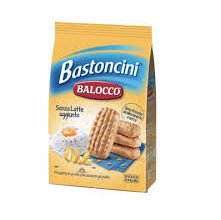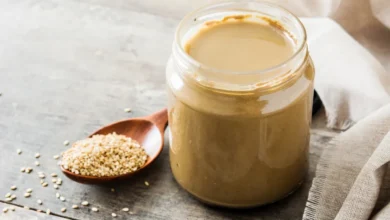Mielado

The word mielado immediately evokes images of sweetness, tradition, and cultural richness. In Spanish, mielado refers to something infused with or resembling honey (miel), a natural product that has been treasured across civilizations for its taste, nutritional value, and symbolic meaning. Honey and honey-based preparations have existed for thousands of years, celebrated not only as food but also as medicine, ritual offering, and even currency. Mielado is not simply about honey itself; it represents an entire universe of practices, recipes, customs, and meanings tied to human connection with nature. In many Latin American and Iberian traditions, mielado describes a honey syrup, a sweetened preparation, or even a cultural expression of something pleasant, affectionate, or heartwarming. Exploring mielado allows us to understand not only food heritage but also the ways in which language and culture preserve values of community, care, and appreciation for natural gifts. This article examines mielado from historical, culinary, cultural, nutritional, and symbolic perspectives, offering a deep dive into why this simple term carries profound weight.
1. The Etymology and Meaning of Mielado
The word mielado derives from miel, the Spanish word for honey, and the suffix -ado, which often signifies something that has been treated, infused, or covered. Linguistically, it suggests something honeyed or something made with honey. In culinary use, mielado often refers to a syrup made by boiling down sugarcane juice or mixing honey with other natural ingredients. In metaphorical use, it describes speech, emotions, or gestures that are sweet, affectionate, or endearing. For instance, calling someone mielado in certain contexts can mean they are tender-hearted or excessively sweet in their behavior. This dual role—culinary and symbolic—makes the term flexible and powerful. Unlike words tied strictly to food, mielado extends into everyday conversation, literature, and even music, representing an aesthetic of warmth and sweetness that transcends literal taste.
2. Historical Roots of Honey in Human Civilization
To understand mielado, we must look at humanity’s long relationship with honey. Archaeological evidence shows that honey was used as far back as 8,000 years ago, with cave paintings in Spain depicting honey gathering. Ancient Egyptians offered honey to their gods, Greeks celebrated it as the food of immortals, and Romans used it both as a sweetener and preservative. In Mesoamerica, honey from stingless bees was part of rituals, medicines, and diet long before the arrival of Europeans. With the introduction of sugarcane during colonial times, honey’s role in some regions shifted, but it never lost its symbolic or culinary presence. Mielado as a preparation—whether from boiled sugarcane juice or honey—thus reflects centuries of adaptation, resilience, and cultural blending. It tells the story of how sweetness was cherished across civilizations and how humans continuously found ways to preserve, enhance, and celebrate it.
3. Mielado in Latin American Cuisine
In Latin America, mielado takes on specific culinary meanings. It often refers to a syrup made from raw sugarcane juice, boiled until thick and caramelized, known in some regions as melao or piloncillo syrup. This syrup is used to sweeten drinks, glaze desserts, and preserve fruits. In Colombia and Venezuela, mielado de panela is a staple, poured over cheese, bread, or traditional sweets. In Mexico, a similar preparation known as miel de piloncillo is used in desserts such as buñuelos and atole. The richness of mielado lies not just in its taste but in the heritage it carries. Recipes are passed down through generations, often tied to holidays, family gatherings, and communal traditions. For many, the flavor of mielado is inseparable from childhood memories, festive celebrations, and moments of cultural pride.
4. The Symbolism of Sweetness in Culture
Mielado is more than food; it is symbolic. Sweetness has long been associated with affection, love, kindness, and joy. When people describe someone’s voice as mielada or melosa, they mean it is sweet, soothing, or pleasant. In poetry and music, honey and sweetness represent passion, tenderness, and sometimes excess. Too much sweetness can also be interpreted as insincerity, which is why being mielado can carry both positive and playful critical undertones. This symbolic dimension connects language with taste, reminding us how sensory experiences shape emotional expression. The universality of honey as a metaphor makes mielado a culturally rich term, one that bridges food, feeling, and philosophy.
5. Nutritional and Medicinal Aspects of Mielado
On a practical level, mielado, whether made from honey or sugarcane, offers nutritional value. Honey contains antioxidants, enzymes, vitamins, and minerals, making it more than just a sweetener. In traditional medicine, honey has been used to soothe coughs, heal wounds, and boost energy. Sugarcane-derived mielado also retains minerals such as iron, calcium, and magnesium, depending on how it is processed. For communities with limited access to industrial supplements, mielado de panela has historically served as a source of nourishment. However, like all sweeteners, it must be consumed in moderation. The balance between its health benefits and risks reflects broader questions about diet, lifestyle, and the evolving role of traditional foods in modern health-conscious societies.
6. The Role of Mielado in Festivities and Rituals
Across Latin America and Spain, sweet preparations like mielado are tied to celebrations. During Christmas, Easter, or local festivals, families prepare sweets glazed with mielado, symbolizing joy and abundance. In some indigenous traditions, honey-based syrups were used in offerings to deities, representing fertility and prosperity. In rural communities, making mielado can be a communal act, bringing families and neighbors together. Beyond religious or festive contexts, it is also part of everyday rituals, such as pouring mielado over morning arepas or adding it to warm drinks at night. Its role in rituals—both sacred and secular—demonstrates how food is not only sustenance but also a marker of identity and belonging.
7. Mielado in Modern Gastronomy
Contemporary chefs and culinary innovators are rediscovering mielado. By incorporating traditional syrups into gourmet dishes, they bridge past and present. For example, mielado de panela might be reduced into a glaze for meats, infused with spices for desserts, or blended into cocktails for unique flavors. In the era of fusion cuisine, mielado offers versatility, authenticity, and cultural storytelling. This reflects a broader trend where traditional ingredients are reimagined in contemporary contexts, proving that heritage foods can adapt while retaining their soul. Through gastronomy, mielado continues to evolve, demonstrating resilience and relevance in an increasingly globalized culinary scene.
8. Economic and Social Dimensions of Mielado
Beyond taste, mielado has economic significance. The production of honey, panela, and related syrups sustains rural economies across Latin America. Small farmers, beekeepers, and artisan producers depend on the cultivation of sugarcane and bees for their livelihoods. By purchasing locally produced mielado, consumers support sustainable agriculture, biodiversity, and community development. The global demand for natural sweeteners is also increasing, providing opportunities for these producers. However, challenges such as climate change, industrial agriculture, and market inequality threaten their sustainability. Thus, mielado reflects broader economic and social dynamics, reminding us that behind every spoonful of sweetness lies the labor and resilience of communities.
9. The Linguistic and Literary Beauty of Mielado
In literature, the concept of mielado often appears metaphorically. Writers and poets use honeyed imagery to describe love, memory, nostalgia, or spiritual sweetness. In oral traditions, proverbs and sayings involving honey carry lessons about life’s pleasures and dangers. The richness of mielado in language illustrates how deeply food metaphors are embedded in cultural expression. Even outside Spanish, the association of honey with sweetness, charm, and affection is universal, showing how taste and emotion are intimately connected. Mielado, as a linguistic symbol, allows us to see how language preserves and transmits cultural values across time and space.
FAQs about Mielado
Q1. What does mielado mean?
It refers to something honeyed, sweetened with honey or syrup, or metaphorically affectionate and tender.
Q2. Is mielado always made with honey?
Not necessarily. In many Latin American traditions, mielado also refers to sugarcane syrup (melao, panela syrup), though honey-based versions also exist.
Q3. What is mielado de panela?
It is a traditional syrup made by boiling down sugarcane-derived panela, widely used in Colombia, Venezuela, and Mexico for drinks, desserts, and glazes.
Q4. Is mielado healthy?
It contains minerals and antioxidants, especially in natural forms, but like all sweeteners, it should be consumed in moderation.
Q5. Where is mielado most popular?
It is especially popular in Latin America, Spain, and regions where sugarcane and honey production are part of local traditions.
Conclusion
Mielado is more than a sweet preparation—it is a symbol of culture, history, and human connection. From its linguistic roots in miel to its culinary role in traditional and modern gastronomy, it embodies the sweetness of both food and life. It links ancient civilizations with contemporary societies, local economies with global markets, and taste with metaphor. Its presence in rituals, festivals, literature, and daily meals proves that food is never just food; it is memory, identity, and heritage. By appreciating mielado, we appreciate the intricate relationship between nature, culture, and community. Whether drizzled over desserts, invoked in poetry, or shared in family gatherings, mielado reminds us that sweetness, in all its forms, is essential to the human experience.




